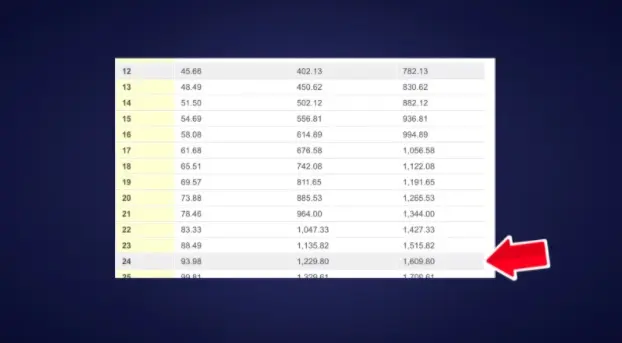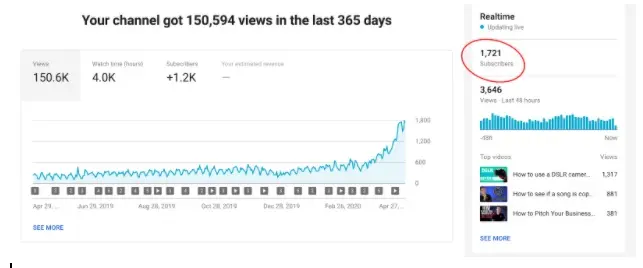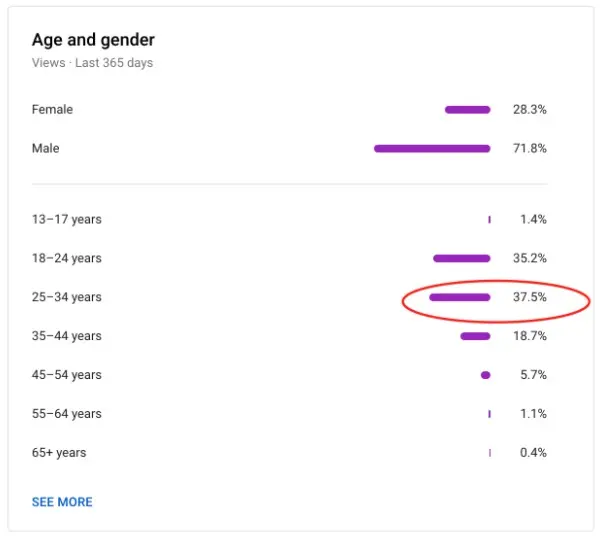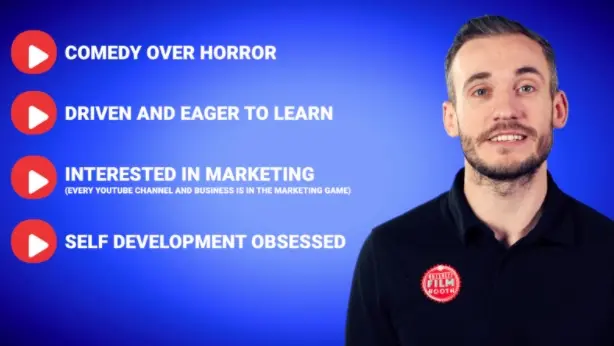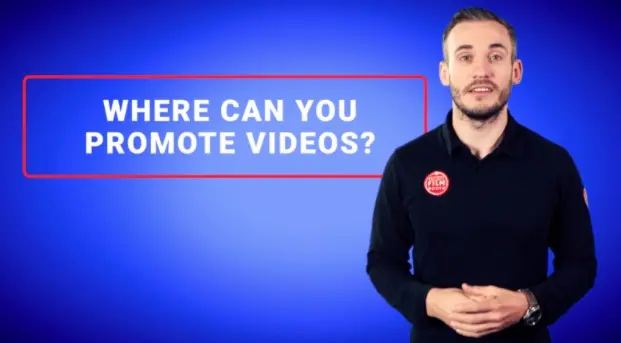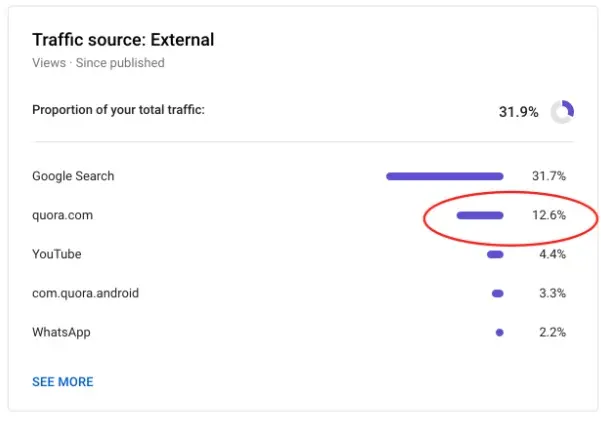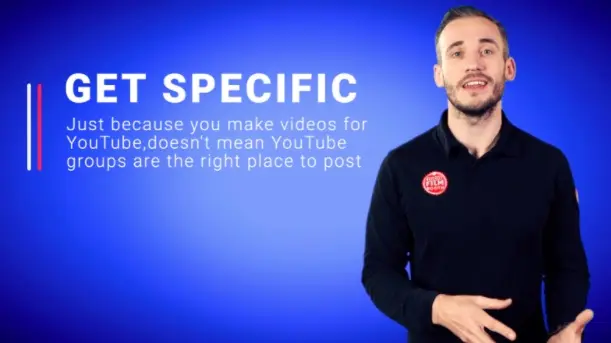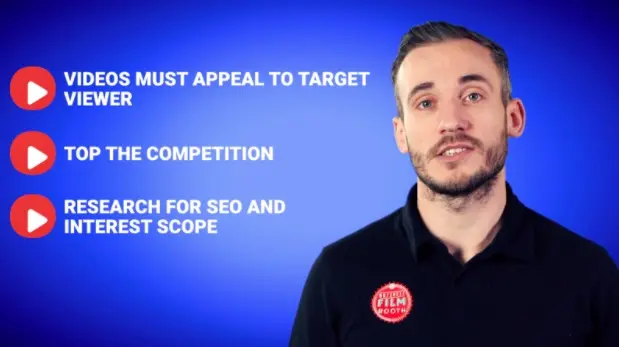I can't wait to get up and come up with a new video strategy, said nobody ever as they put on their leotard, and rode off into the sunrise on their half unicorn, half-dragon hybrid. And this is a big problem. For many, devising a plan has multiple issues;
- A plan means they can fail.
- Where on earth do you start?
- It's complex and hard work.
All of these things mean the average creator or business produces content Willy Nilly, they guess what to make, where to promote it and then worse than that, they don't measure it. This is a sure-fire way to get no results with your videos. So now we're going to give you a step by step template to follow so you can come up with your first or even your third strategy for your next years worth of video and beyond. We're going to try to only keep in the most important info as to not overwhelm you.
To begin, we would usually say you need to pick a channel niche and if you're a business, your niche is going to be industry-specific.
How to Create a YouTube Strategy for 2024:
Set a goal
TLDR; pick a ten-year goal and then work back as how you might get there. This years Youtube marketing strategy will be the first stepping stone in that ten year goal. If ten years scare you, pick five, but for us, short term thinking will fail you, so don't be afraid to go miles down the line, it'll do you a world of good. You can not go any further until you decide this.
So as an example, we're going to use our goal (above) for our YouTube channel for the year, we created a chart which tells us we need to be at 1600 subs by the end of the year to be on target to hit our 10-year goal of 500k subs.
In our case, we also want to feature in a Forbes article, pick up 3 new pieces of business just from our content and have one of our videos get over 10,000 views from when we started trying to grow this channel at the start of 2019. Businesses may want to go way, way deeper looking at KPIs, awareness and conversions but it doesn't have to be rocket science.
Define your audience
Who are your videos for? And the answer is, not everybody. Here's why. If you ran out into the street because your friend had left your wallet behind, and to get his attention, you shouted. "NAAARRRHh"
A bunch of people would turn around. Some might even come and ask if you're ok, they'd then go on about their business. If you ran out and screamed "Dan", maybe two people would turn around and listen, 1 being your friend. To build traction with video, you need them all to shout "Dan". Content talks to people, you aim is to make sure the people you want to attract hear you.
On the sheet, write down who you think your videos are for. Now before we start this, its worth noting that people who you have not designed your content for will find it too, that doesn't mean it's wrong for them or they are not welcome.
Our channel is for people aged 25 - 35, male and female, who are already making videos but feel they do not get the credit they deserve as well as total beginners who want to start a YouTube channel and promote their business or create one online.
So if you are above 45, don't worry, we want you to watch too, but the humour and references we make will be designed more to appeal to that generation, mainly because when a 25 year old is 35, they could have spent 10 years watching our content as they step into the marketing manager role at a business that wants to produce video, and who do you think they'll ask.
They watch comedy shows more than horror, are driven and eager to learn, they have an interest in marketing, even if they don't quite realise it yet and they want to self develop and boost their knowledge on a regular basis.
We could still go deeper, but let's not baffle you too much. I would say our tactic is a little stupid, we should probably try to appeal to the decision-makers in businesses right now, but we feel we need traction first and that will take a long time to build. This video goes in to a lot more depth on working out your target viewer.
For businesses, these are known as avatars. You should have these in place already. Creators, you probably won't, so it might take you a little longer to work out. Oh, and these can be updated or even totally changed as you learn more about your viewers. It can take years to perfect. The reason your "who" is so important is to make sure people hear you. When people feel like your content has been produced specifically to them and their needs, you'll grab attention, hold it, and you will build a viewership that becomes part of your tribe. And tribes build followings.
Create a distribution strategy
So where does Dan hang out, how are you going to get him to discover your channel?
We can't just rely on YouTube to show people our videos, sure they will, but as a business or small creator, you're fighting against massive influencers and other huge distribution legends, so the competition to get seen is epic.
We know that our ideal audience is hungry to learn and interested in self-development, so we can promote our videos on platforms that provide self-development.
In our case he following would be considered appropriate channels to seed our content:
- Facebook groups about growing a YouTube channel
- Answering questions about making videos on Quora
- Reddit forums
- LinkedIn groups
Now if your channel is about recruitment, don't expect people in a YouTube group on Facebook to care about your content, you need to seed your content on recruitment platforms.
So think very niche specific. This is another reason you have to have a channel niche. Otherwise, you'll be promoting in new and random places all the time and will never be able to build a community.
Content scope and research
As mentioned, you have hopefully chosen your channel niche so now you know what you want to achieve, the people you need to hep you achieve it, and where they are, you can start coming up with content ideas to entice them.
We've made this video here about coming up with topics, we'd highly recommend watching it at some point. As part of your "what" decide how often you will create and post videos on a consistent and long term basis. Don't go mad, we post three times a week, but its overkill for 90% of people, and without the systems and processes in place to make this scale of video, its a gun to the head.
We'd recommend 1 new video a week as the goal for most. Your topics need to tick these boxes.
Each video must
- Appeal to your target viewer
- Aim to be better, more detailed, funnier or appeal in some way shape or form that your competition does not on the same topic.
- Have the topics and titles researched for search and social media optimisation and interest scope.
Find what your viewers care about and make videos on that. Tools like Uber Suggest make this easy, again, the video we made on this topic will fill in all those blanks.
Create a production system
Now you need to create a production system. A format and style you can use for your videos that ensures a consistent feel your target viewer will resonate with, as well as something that won't eat up all your time trying to produce. We'd recommend writing and editing a script before you film. Do the bulk of the work on paper. This will eliminate waffle, go deeper into your content, and you'll know before you spend the time on production if its going to work or not. It also makes editing faster. A lot faster.
If you decided to make a video a week, that means you need to try to batch produce 4 in one go, 8 in one go or maybe even 12. When we say one go, we don't mean in an hour we mean plan and research in one go, then write in one go, then film in one go, then edit in one go. It could take you a few days or even longer, but it will free up all of your time for months after.
Batch production enables you to have your content ready and waiting to be scheduled, it stops time demands from eating you alive and means you can get ahead because holidays and illness happen. Feel free to ignore this if you don't want a life or free time or the constant burden of trying to catch up on production.
And that is your basic video content strategy. These are the foundations you will build your channel on, miss a step, and i'm afraid your house will take a lot longer to build or worse, totally fall down.
Frequently Asked Questions
What should be included in a YouTube strategy?
YouTube marketing strategies and tips for success:
- Build and brand your YouTube channel
- Understand your audience
- Understand your competitors
- Create high quality YouTube content
- Use new YouTube features, like YouTube Shorts
- Optimize videos with strong SEO
How do you create a marketing strategy on YouTube?
Tips to create a strong YouTube Marketing strategy:
- Build your channel – and brand it
- Research and understand your target audience
- Create high quality YouTube content
- Use new YouTube features, like YouTube Shorts
- Optimize videos with strong SEO
- Promote your videos
- Consider influencer marketing
What is the best strategy to grow on YouTube?
To grow your YouTube, you need to follow these key tips:
- Write strong, must-see titles
- Optimize videos with strong SEO
- Customize thumbnails
- Understand your audience and their needs
- Cross-promote videos
- Run contests
- Encourage viewers to follow you
What is YouTube's business strategy?
YouTube earns most of its revenue from advertisements, much like other Google properties. YouTube lets you embed targeted advertising directly through video clips as well as promoted featured content.

